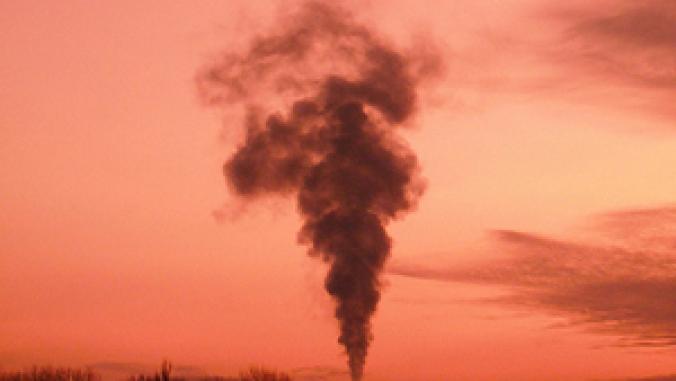BP, Powerspan Team to Develop CO2 Capture Technologies
BP Alternative Energy and Powerspan Corp. agreed Wednesday to develop the technology that could help power plants capture carbon dioxide emissions.
BP Alternative Energy and Powerspan Corp. agreed Wednesday to develop the technology that could help power plants capture carbon dioxide emissions.
The two companies agreed to develop and commercialize Powerspan's CO2 capture technology for new and existing coal-fired power plants. The agreement calls for financial and technical support for pilot demonstration and commercial scale-up activities, the companies said in a statement. That may include joint development of large-scale demonstration projects that capture CO2 from power station flue gas.
"BP's technical capability, experience with large projects, and commitment to advancing low carbon power solutions uniquely qualifies them to assist Powerspan in scaling up the ECO2 technology for commercial application," said Powerspan CEO Frank Alix in a statement. "We look forward to working with BP on the demonstration and commercialization of the ECO2 technology."
The technology, called ECO2, captures the CO2 at the post-combustion stage in order to send the emissions for long-term underground storage. Power plants also can use this regenerative process along with Powerspan's Electro-Catalytic Oxidation, or ECO(R), process to control sulfur dioxide, nitrogen oxides, mercury and fine particulate matter.
FirstEnergy Corp. and the Midwest Regional Carbon Sequestration Partnership are set to begin testing the ECO2 technology in early 2008 in what could the first CO2 capture and sequestration demonstration at a conventional coal-fired power plant.
The pilot scale testing of the ECO2 technology will take place at FirstEnergy Corp.'s R.E. Burger plant in Shadyside, Ohio. It will process a 1-megawatt slipstream, or 20 tons of CO2 per day, from the plant's 50-megawatt ECO unit. It will sequester the captured CO2 into an 8,000-foot test well drilled on-site earlier this year.
The U.S. Department of Energy's (DOE) initial estimates suggest the ammonia-based CO2 capture process could yield significant savings compared to its commercially available amine-based CO2 capture counterpart.
"We consider Powerspan's ECO2 technology among the most promising solutions for post-combustion capture of CO2," said Jonathan Forsyth, CO2 Capture Team Leader at BP Alternative Energy, in a statement. "This is an opportunity for BP to broaden the scope of our low carbon power offering by including a CO2 capture technology that is compatible with new and existing coal fired power stations. The priority in our collaboration with Powerspan is to successfully demonstrate the technology and advance it to full-scale commercial deployment as rapidly as possible."
Powerspan and the DOE’s National Energy Technology Laboratory teamed in 2004 to develop a cost-effective CO2 removal process for coal-fired plants. Once combined with the company’s ECO process for multi-pollutant control, the CO2 capture occurs after the other pollutants. The ammonia-based solution regenerates, releasing CO2 and ammonia. The recovered ammonia gets sent back to the scrubbing process while the CO2 ends up in a form suitable for geological storage.
The two companies agreed to develop and commercialize Powerspan's CO2 capture technology for new and existing coal-fired power plants. The agreement calls for financial and technical support for pilot demonstration and commercial scale-up activities, the companies said in a statement. That may include joint development of large-scale demonstration projects that capture CO2 from power station flue gas.
"BP's technical capability, experience with large projects, and commitment to advancing low carbon power solutions uniquely qualifies them to assist Powerspan in scaling up the ECO2 technology for commercial application," said Powerspan CEO Frank Alix in a statement. "We look forward to working with BP on the demonstration and commercialization of the ECO2 technology."
The technology, called ECO2, captures the CO2 at the post-combustion stage in order to send the emissions for long-term underground storage. Power plants also can use this regenerative process along with Powerspan's Electro-Catalytic Oxidation, or ECO(R), process to control sulfur dioxide, nitrogen oxides, mercury and fine particulate matter.
FirstEnergy Corp. and the Midwest Regional Carbon Sequestration Partnership are set to begin testing the ECO2 technology in early 2008 in what could the first CO2 capture and sequestration demonstration at a conventional coal-fired power plant.
The pilot scale testing of the ECO2 technology will take place at FirstEnergy Corp.'s R.E. Burger plant in Shadyside, Ohio. It will process a 1-megawatt slipstream, or 20 tons of CO2 per day, from the plant's 50-megawatt ECO unit. It will sequester the captured CO2 into an 8,000-foot test well drilled on-site earlier this year.
The U.S. Department of Energy's (DOE) initial estimates suggest the ammonia-based CO2 capture process could yield significant savings compared to its commercially available amine-based CO2 capture counterpart.
"We consider Powerspan's ECO2 technology among the most promising solutions for post-combustion capture of CO2," said Jonathan Forsyth, CO2 Capture Team Leader at BP Alternative Energy, in a statement. "This is an opportunity for BP to broaden the scope of our low carbon power offering by including a CO2 capture technology that is compatible with new and existing coal fired power stations. The priority in our collaboration with Powerspan is to successfully demonstrate the technology and advance it to full-scale commercial deployment as rapidly as possible."
Powerspan and the DOE’s National Energy Technology Laboratory teamed in 2004 to develop a cost-effective CO2 removal process for coal-fired plants. Once combined with the company’s ECO process for multi-pollutant control, the CO2 capture occurs after the other pollutants. The ammonia-based solution regenerates, releasing CO2 and ammonia. The recovered ammonia gets sent back to the scrubbing process while the CO2 ends up in a form suitable for geological storage.




